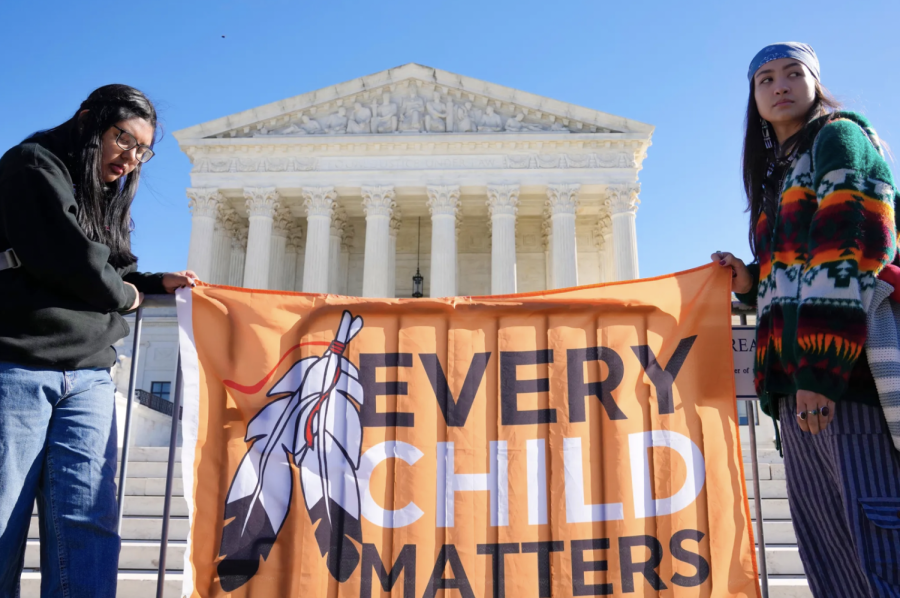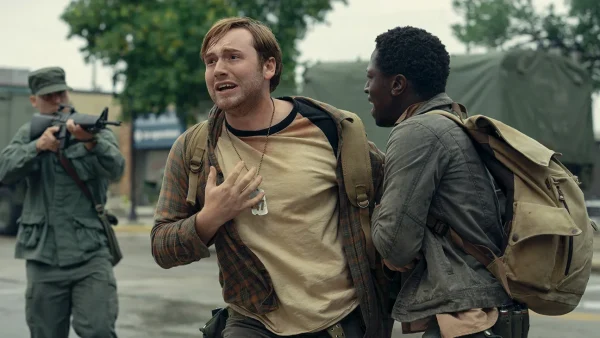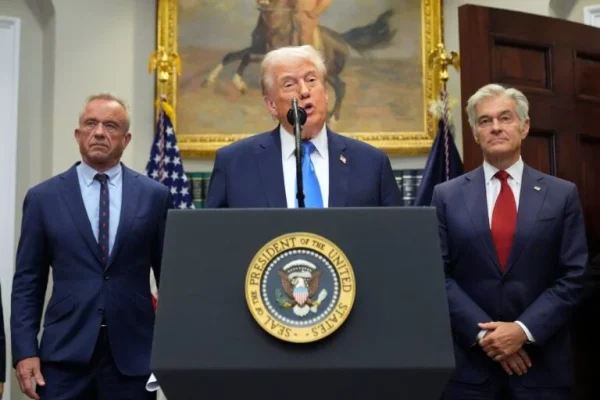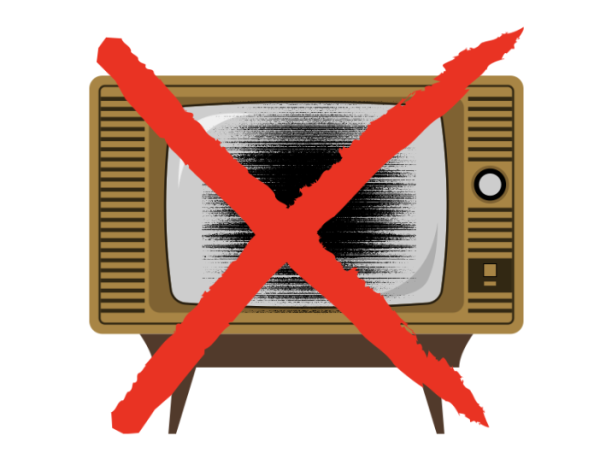Native American children are in danger of being declared unconstitutional
November 16, 2022
The Supreme Court heard oral arguments in Brackeen v. Haaland on Nov. 9 over whether the provisions in the Indian Child Welfare Act (ICWA) violate the 10th Amendment of the United States Constitution for imposing duties on Texas based on federal law in an effort to repeal the Native American Child Protection Act of 2021. The case was brought forth in 2021 to the United States District Court for the Northern District of Texas by seven individuals, all of whom except one are non-Native, and the States of Louisiana, Indiana and Texas. Many fear that Native American sovereignty as a whole will be at risk when the Supreme Court makes its decision.
The ICWA is a United States federal law brought into effect in 1978 that attempts to protect against the State’s involvement in Indigenous child welfare cases. There was a long history that is sure to be ongoing of Native American children being taken from their tribes and stripped of their tribal identity after being placed in “closed adoptions” with Euro-American homes, allowing no contact between the child and their birth parents. The Native American Child Protection Act works to prioritize the child’s extended family, members of their tribe or other Indigenous families when it comes to fostering and adopting a child with Native American ancestry.
In the late 19th century, when the U.S. government abducted hundreds of thousands of Native American children from their homes and enrolled them into Native American residential schools, also known as Indian boarding schools or industrial schools, they were emotionally and physically abusive towards the children. From the 1850s to the 1970s, social workers and Indian agents, also called “peace missionaries,” forcibly removed Native children from their homes in an attempt to control the Native population, but since interstate and interethnic foster care and adoption was discouraged, they were settled in Christian, government-run boarding schools.
The Minnesota Historical Society published an article called “Native American Boarding Schools,” where they described the schools’ missions as “restructur[ing] Native people’s minds and personalities by severing children’s physical, cultural, and spiritual connections to their tribes.” It was widely thought that Indigenous peoples were uncivilized and that the children were being rescued from a life of poverty. However, the U.S. government failed to distribute resources to Native American reservations throughout history, which is still an issue today.
During that time, in 1891, Congress enacted a compulsory attendance law that required families to enroll their children and placed “sanctions” on families that refused to comply. Captain Richard H. Pratt, the founder of the first off-reservation school, believed it was the white Americans’ duty to “Americanize” the Natives.
The boarding schools began dissipating after approximately 70 years, only after questions were raised about the conditions of the schools in 1928. By the late 1960s, most schools were no longer upheld and by 1975, the Indian Self-Determination and Education Assistance Act of 1975 guaranteed tribes “the opportunity to determine their own futures and the education of their children through funds allocated to and administered by individual tribes.”
In the 1950s, when the Indian Adoption Project (IAP), the country’s first large-scale transracial adoption program was cemented, many saw history repeating itself (although for some, the issue had never stopped). Native children were once again being displaced, except this time by private adoption agencies and foster homes.
A study referenced in “Supreme Court Preview: Brackeen v. Haaland“ by Harvard Law Today estimated that 25 to 35 percent of all Native children were displaced into non-Native homes. In the article, Harvard Law Professor Joseph Singer explains that the ICWA act is “not very different from other countries that have gotten upset that a lot of their kids were being adopted in the United States and have passed laws to limit the exportation of their children to American families.”
The government was able to carry out the extrapolation of Indigenous children because they claimed the children were experiencing abuse and could thus transfer them into foster care since foster homes were temporary residences for children who have experienced abuse, neglect, or abandonment. Later the article states, “These kinds of cultural and material divergences from Euro-American expectations instantly made native families appear to be backward and neglectful of their children.” This made it possible and acceptable for the government to proceed with its actions.
The Ohio State University Inspire podcast, “Stolen from her tribe, now she’s fighting back,” claims that adoption became an efficient assimilation tool. Professor Singer notes, “Over time, that would conceivably have the effect of reducing the numbers of tribal members that otherwise would have existed and severing any connection those children had to tribal cultures and political systems.” It must be recognized that all of these actions by the U.S. government and their profitable corporations were to get rid of Indigenous people by erasing their history, their culture and their future within America.
The National Council of Urban Indian Health notes, “It is also important to recognize that this case, as well as other ongoing challenges to ICWA, are part of a broader effort to attack the foundations of Federal Indian Law. The recognition that being Native is a political classification is a critical underpinning of not just ICWA, but many laws that relate to housing, healthcare, education and employment.”
To read more on this case and the history of suppressed Indigenous sovereignty, refer to the Truthout website and their article, “Supreme Court Considers Dismantling Native Sovereignty in Haaland v. Brackeen” or the American Civil Liberties Union (ACLU) website and their article, “Brackeen v. Haaland.”












